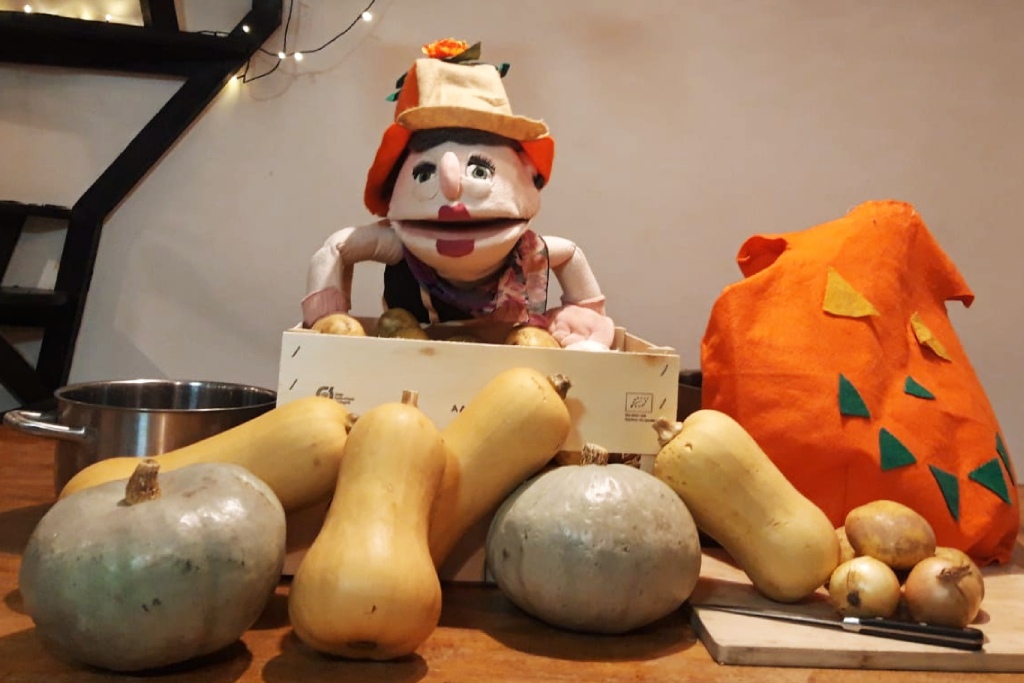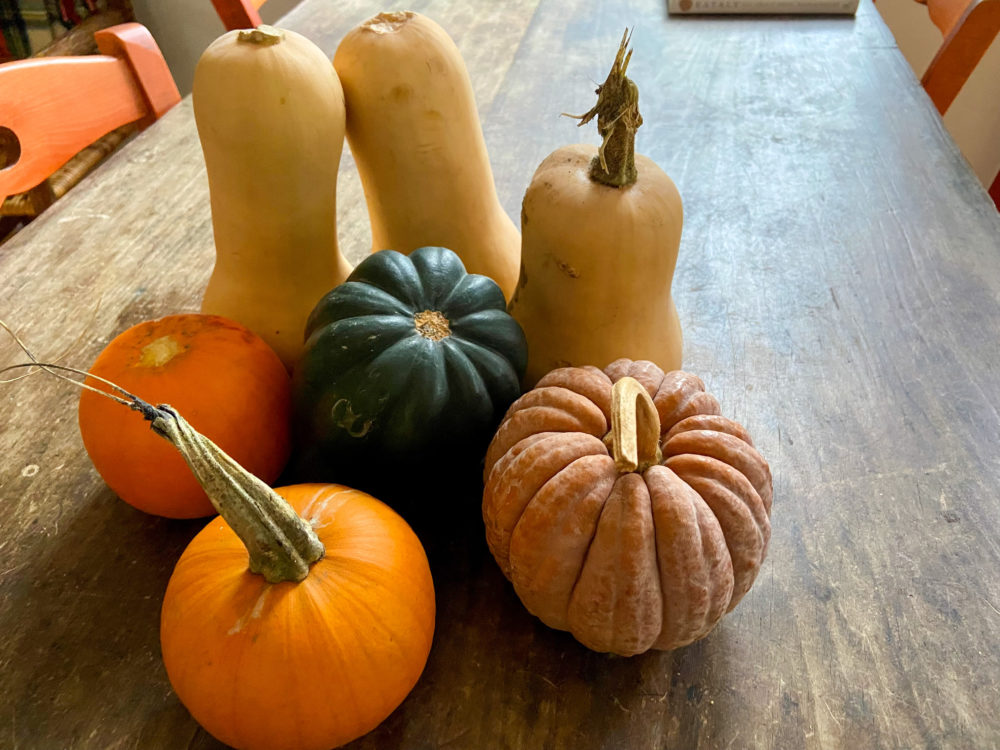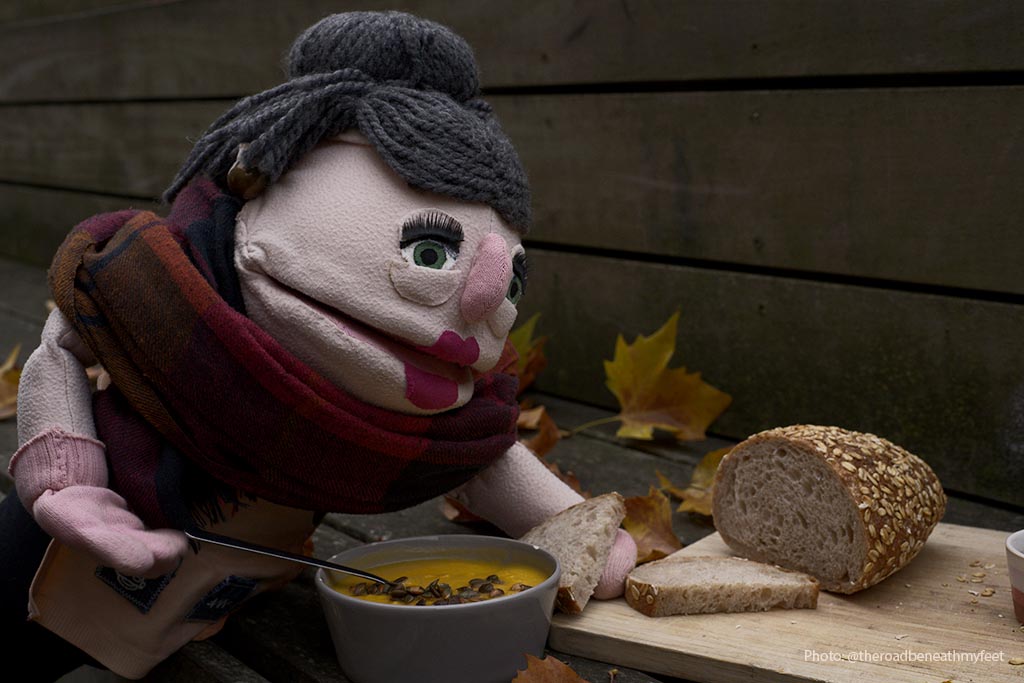PUMPKIN (GRÆSKAR) // SEASON: AUTUMN 🍂

![]()
![]() Pumpkin season is in full swing in Denmark. Grandma Sita loves pumpkins, it is a versatile ingredient that works both in sweet and savoury dishes. 🤗 Let’s find out more about this veggie, king of Halloween feast?
Pumpkin season is in full swing in Denmark. Grandma Sita loves pumpkins, it is a versatile ingredient that works both in sweet and savoury dishes. 🤗 Let’s find out more about this veggie, king of Halloween feast?

Native to North America (northeastern Mexico and the southern United States), pumpkins are one of the oldest domesticated plants, having been used as early as 7,000 to 5,500 BC. All pumpkins are winter squash, mature fruit of certain species in the genus Cucurbita. Characteristics commonly used to define “pumpkin” include smooth and slightly ribbed skin and deep yellow to orange colour.
Source: Wikipedia
- NUTRITION
The colour of pumpkins derives from orange carotenoid pigments, including beta-cryptoxanthin, alpha and beta carotene, all of which are provitamin A compounds converted to vitamin A in the body.
Source: Healthline.com
Nutrition information for major nutrients of 100g of pumpkin
|
Calories |
26 |
|
Carbohydrates |
6.5 g |
|
Fiber |
0.5 g |
|
Sugars |
2.76g |
|
Fat |
0.1 g |
|
Protein |
1 g |
|
Vitamin A |
53% |
|
Vitamin C |
11% |
|
Iron |
6% |
|
Calcium |
2% |
- CULTIVATION
A pumpkin is a cultivar of winter squash that is round with smooth, slightly ribbed skin and is most often deep yellow to orange in colouration. The thick shell contains seeds and pulp.
Source: gardeningknowhow.com
- LOCAL PRODUCERS ♻️
There are many local farms and gardens where you can choose and pick kale by yourself in Denmark! To find your nearby kale garden, please click below:
- USES
Pumpkins are widely grown for food, as well as for aesthetic and recreational purposes. Pumpkins have several culinary uses. Most parts of the pumpkin are edible, including the fleshy shell, the seeds, the leaves, and the flowers.
Source: gardeningknowhow.com
- PLANT-BASED RECIPES🌱
👉🏼 Pumpkin soup by Grandma Sita

- FUN FACT
The practice of carving pumpkins for Halloween originated from an Irish myth about a man named “Stingy Jack”. The turnip has traditionally been used in Ireland and Scotland at Halloween, but immigrants to North America used the native pumpkin, which is both readily available and much larger – making them easier to carve than turnips. Not until 1837 does jack-o’-lantern appear as a term for a carved vegetable lantern, and the carved pumpkin lantern associated with Halloween is recorded in 1866.
Source: Wikipedia
